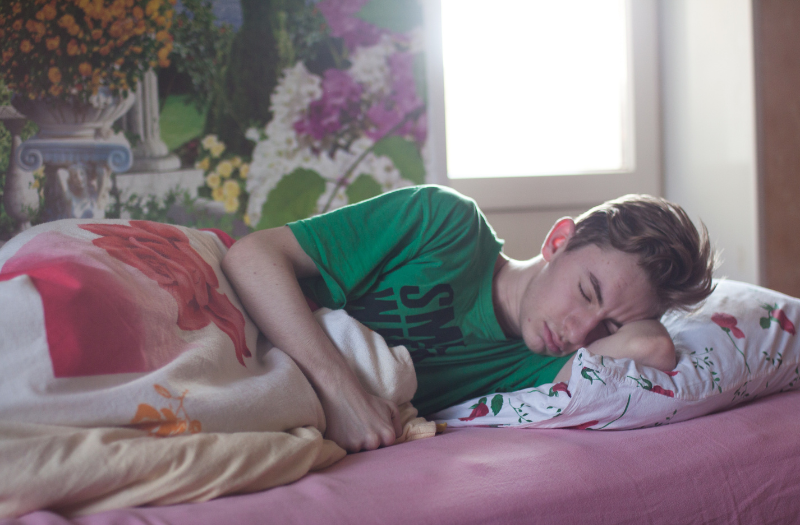Scoliosis is a three-dimensional deformity of the spine caused by the rotation of the vertebrae. The most common type of scoliosis is idiopathic adolescent scoliosis, which appears in young people or children while they are growing.
If your child or a family member has been diagnosed with scoliosis, you probably have some questions about what it is and whether surgery will be needed to solve it.
The degrees of scoliosis refer to the magnitude of the curve: mild scoliosis (20 degrees or less), moderate scoliosis (25 to 40 degrees), and severe scoliosis (50 degrees or more).
Idiopathic adolescent scoliosis (AIS)
When a patient’s spine has more than 10 degrees of curvature of the thoracic or lumbar segments, and no clear cause can be determined, it is referred to as idiopathic scoliosis. In fact, in most cases of adolescent scoliosis, the cause of onset is unknown.
The spine often develops a curve during a growth spurt in the early teen years. Although sometimes this curvature is stable and does not change over time; in other cases, it continues to progress and become worse.
Adolescent idiopathic scoliosis is most common in children and adolescents between the ages of 10 and 18, especially girls. Unlike scoliosis in adults, which is usually is painful because of spinal degeneration, especially in the segments with greater curvature or deformity, it is unusual for this condition to cause pain during adolescence.
Treatment for adolescent scoliosis
Since adolescents may have scoliosis without noticing any pain, and it may not even show, it is important for adolescents to be examined by the doctor for possible abnormalities in their body and postural symmetry. Adolescent idiopathic scoliosis affects about 5% of young people and, although that may not seem like a large number, it is significant.
The most appropriate treatment always depends on the severity of the curvature, which part of the spine is affected, and the stage of development of bone maturity of the adolescent. The various treatment options for scoliosis also take into account the patient’s needs, preferences, and future goals.

In most cases, adolescents with idiopathic scoliosis do not need surgery; but as the child grows, their condition will be monitored over time to follow their case to skeletal maturity. Mild curves of less than 20 degrees do not require surgery or reinforcements.
Dr. Clavel explains to Alimente that “it is usually when the spinal deviation is greater than 20 degrees that parents notice that their child has one shoulder, hip, or shoulder blade slightly out of line with the other.” You can read the full article here:
How scoliosis affects children
When the spinal curve is between 20 and 40 degrees, in addition to posture exercises, treatments such as an orthopedic brace may be used to correct the curvature. Traditional physical therapy can help treat pain if your teen is in discomfort. At IC Rehabilitation, our physical therapists work to strengthen the patient’s back and leg muscles, and help them gain flexibility.
Scoliosis surgery in adolescents
If the spinal curvature is greater than 40 to 45 degrees, and causes a significant deformity that affects the patient’s quality of life, we recommend corrective surgery. The goal of the operation is correcting the curve and rotation of the affected segment of the spine.
The recommendation for surgery will depend not only on the degree of the curve, but also its location, or the risk that it will continue to progress and may lead to a loss of postural balance.
There are various techniques for scoliosis surgery. The most common type is placement of screws in the affected vertebrae, attaching them with surgical rods to correct the alignment of the vertebrae, and hold them in place until the corrected segments of the spine are fused.
In the following video, Dr. Català explains how scoliosis surgery has advanced thanks to planning and the ability to customize the rods:
The patient can expect to return to normal daily activity in about 4 to 6 weeks after the surgery.
Although, in general, teens who have undergone surgical treatment will be able to return to exercise and physical activity, they will receive instructions from their surgeon about what specific activities are allowed after their treatment.
Can adolescent scoliosis be cured?
Scoliosis is often a progressive disease, and once a patient is diagnosed with adolescent idiopathic scoliosis, they need to understand that it is a condition they will have for the rest of their life. The patient will continue to need regular check-ups with a doctor specialized in scoliosis to monitor the curve progression.
It is very important to detect scoliosis in children and adolescents as soon as possible. Regular medical check-ups are important because, as we mentioned earlier, the young person is unlikely to complain of discomfort or back pain except in severe cases.
Categories: Spine pathologies, Surgery, Back pain
